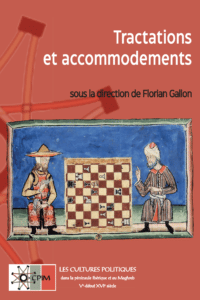UN@ est une plateforme d'édition de livres numériques pour les presses universitaires de Nouvelle-Aquitaine
Auteur : Alicia Hernández Robles

Departamento de Prehistoria, Arqueología,
Historia Antigua, Historia Medieval y Ciencias y Técnicas Historiográficas,
Universidad de Murcia,
Campus de La Merced,
E-30001 Murcia
alicia.hernandez5@um.es
AliciaRobless
0000-0001-8452-5258

Historia Antigua, Historia Medieval y Ciencias y Técnicas Historiográficas,
Universidad de Murcia,
Campus de La Merced,
E-30001 Murcia
alicia.hernandez5@um.es
AliciaRobless
0000-0001-8452-5258

Alicia Hernández Robles obtained her BA in History from the University of Murcia and her MA in Arab and Hebrew Cultures : al-Andalus and Contemporary Arab World from the University of Granada. Currently she is a PhD candidate of medieval archaeology at the University of Murcia.
Her research interests include the archaeological and historical interpretation and analysis of the funduq ; the study of trade and travels in the Medieval Mediterranean ; and the archaeological and historical interpretation of the urban fabric and their commercial and accomodation infraestructure.
She participates as a researcher in the projects “The origins of the Italian presence in Murcia (XII-XV centuries)” (University of Murcia) funded by the Fundación Seneca Agency of Science and Technology of the Region of Murcia and “Industry and trade in al-Andalus (XII-XV centuries)” (University of Granada) funded by the Junta de Andalucía (FEDER Andalucía Operational Program).
She is also Archaeological Supervisor and Community Manager of San Esteban archaeological site (https://sanesteban.um.es/).
Bibliography
- Hernández Robles, A. (2019): “El funduq en al-Andalus: Revisión y propuesta metodológica”, Los tiempos cambian, de la piedra al teclado. X Jornadas de Jóvenes en Investigación Arqueológica. Burgos 7-10 de junio de 2017, Burgos: Asociación de Historia y Arqueología de Burgos, pp. 294-302.
- Eiroa Rodríguez, J., Haber Uriarte, M., Vallalta Martínez, P., González Ballesteros, J. A., Hernández Robles, A., Celma Martínez, M., Martínez Rodríguez, A. L., Muñoz Espinosa, M. A., Salas Rocamora, S., Molina Campuzano, M. I., (2019): “El conjunto arqueológico de San Esteban: aportaciones desde la investigación interdisciplinar” en XXV Jornadas de Patrimonio Cultural. Región de Murcia, Tres Fronteras Ediciones, Murcia, pp. 41-51.
- Haber Uriarte, M., Eiroa Rodríguez, J. A., González Ballesteros, J. A., Hernández Robles, A., Celma Martínez, M., y Gómez Marín, J., (2020): “Planificación y metodología de campo para una investigación interdisciplinar en la maqbaraislámica del conjunto arqueológico de San Esteban (Murcia)”, Arkeogazte, 10, pp. 201-222.
- Hernández Robles, A. (2021): “Comercio y alojamiento en Madīnat Mursiya. Estudio arqueológico de los fanādiq andalusíes en Murcia”. Arqueología Y Territorio Medieval, 28, e6186, pp. 125-152 . https://doi.org/10.17561/aytm.v28.6186
- Hernández Robles, A. (2021): “La numismática de Ibn Mardanīš: Instrumento de propaganda y legitimación del poder” en A., García Porras (ed.), Manifestaciones materiales del poder en al-Andalus, Bilbao: Universidad del País Vasco (UPV/EHU), pp. 197-202.
- Hernández Robles, A. (2021). “La pervivencia del funduq andalusí en las ciudades de Valencia, Murcia y Sevilla tras la conquista. Un estudio a partir de los repartimientos del siglo XIII”, Medievalismo, 31, pp. 235–271. https://doi.org/10.6018/medievalismo.504981
Funduq (pl. fanādiq) y fondaco (pl. fondachi) se emplearon para hacer referencia a edificios que fueron creados con un mismo propósito comercial, por lo que no es raro encontrar ambos términos utilizados como traducciones de un mismo concepto en distintos idiomas.


